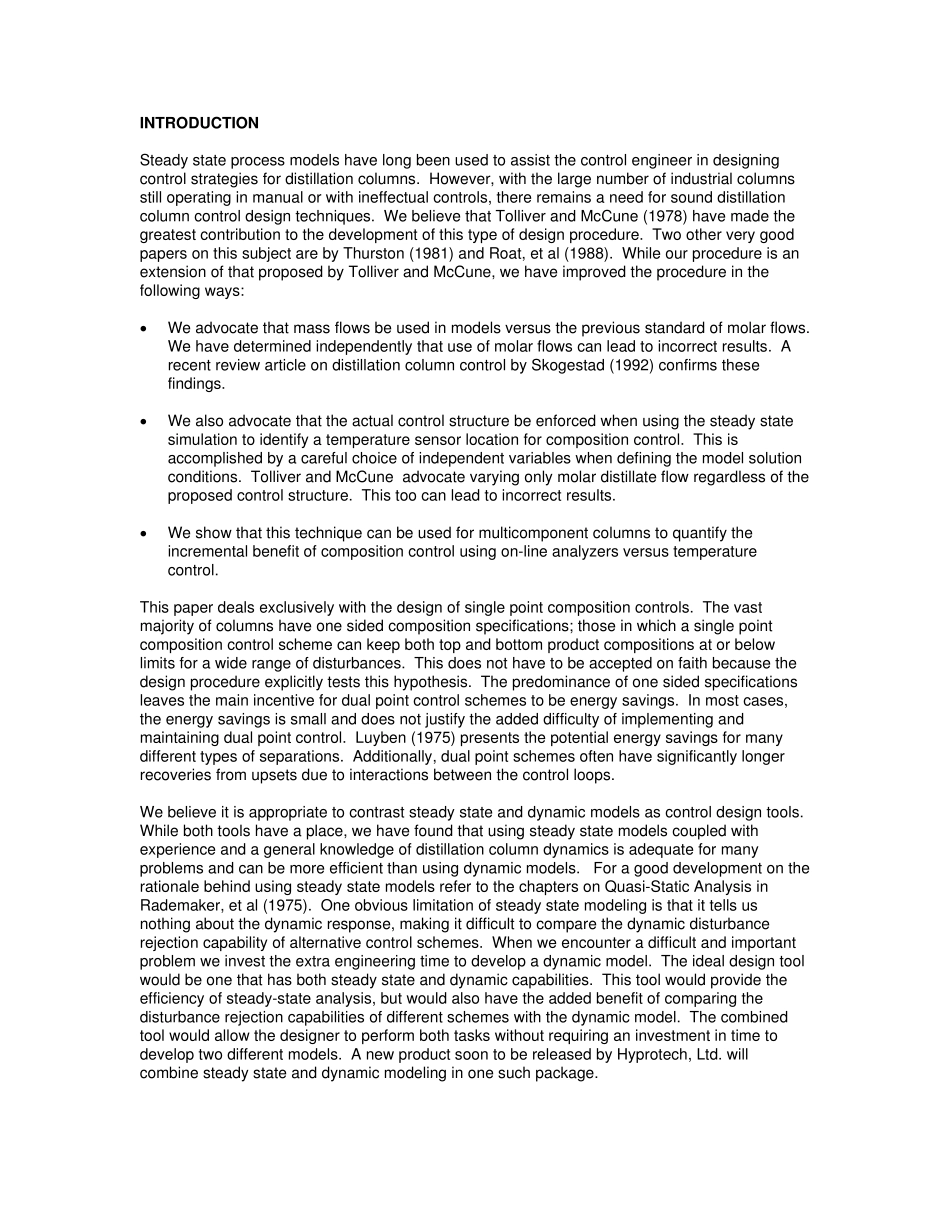DISTILLATION COLUMN CONTROL DESIGN USING STEADY STATE MODELS: USEFULNESS AND LIMITATIONS Paul S. Fruehauf, PE Engineering Department E. I. du Pont de Nemours & Co., Inc. P.O. Box 6090 Newark, Delaware 19714-6090 & Donald P. Mahoney Hyprotech, Inc. 501 Silverside Road Wilmington, DE 19809 KEYWORDS Computer Aided Engineering, Simulated Distillation, Chemical Processing, Distillation Control, Steady State Modeling ABSTRACT Steady state models continue to be powerful and efficient tools for designing control systems for distillation columns. This paper presents a control design procedure and an example application of this technique to an actual column. INTRODUCTION Steady state process models have long been used to assist the control engineer in designing control strategies for distillation columns. However, with the large number of industrial columns still operating in manual or with ineffectual controls, there remains a need for sound distillation column control design techniques. We believe that Tolliver and McCune (1978) have made the greatest contribution to the development of this type of design procedure. Two other very good papers on this subject are by Thurston (1981) and Roat, et al (1988). While our procedure is an extension of that proposed by Tolliver and McCune, we have improved the procedure in the following ways: • We advocate that mass flows be used in models versus the previous standard of molar flows. We have determined independently that use of molar flows can lead to incorrect results. A recent review article on distillation column control by Skogestad (1992) confirms these findings. • We also advocate that the actual control structure be enforced when using the steady state simulation ...


